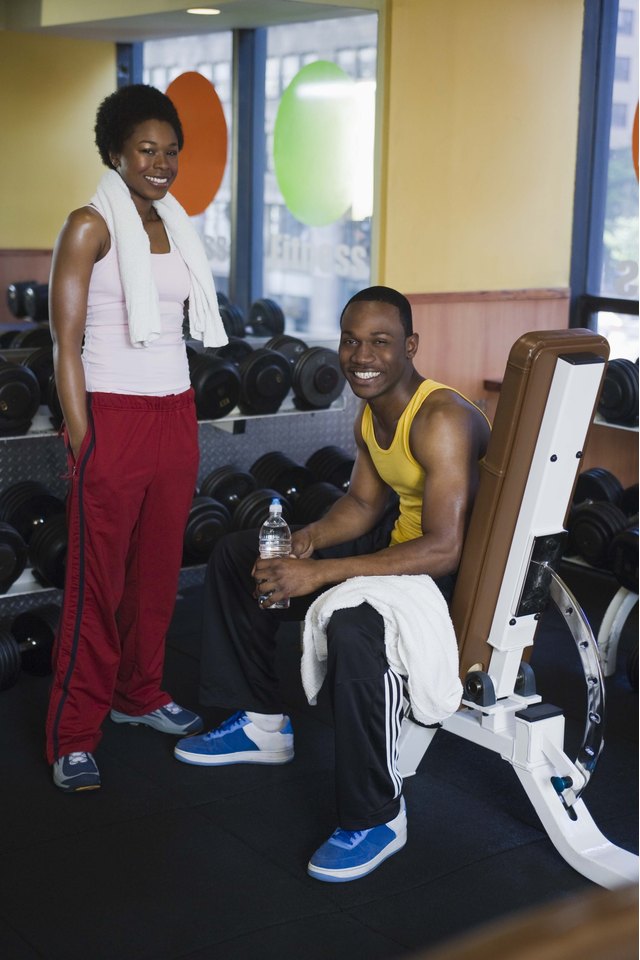What Muscles Do Lying Leg Curls Work?

You need to visit a fitness gym to perform lying leg curl. The strength training exercise is done on a machine that places you in a face-down lying position. It’s an isolation exercise, as it only involves movement around one of your joints. Your knee joints bend against resistance as you pull the leg pad resting against your calves up toward your hips. The muscles involved in lying leg curl are the ones that flex your knees.
Hamstrings
The hamstrings are considered the primary mover during lying leg curls. The hamstrings are made up of three separate muscles, which include the semitendinosus, semimembranosus and biceps femoris. The hamstrings run down the back of your thighs. They originate at your pelvic bone and the top of your femur, and then go down your leg where they insert at the tibia bone at the back of your knees. Together, these muscles are responsible for flexing your knee joints. As you bend your knees and bring the leg pad up towards your buttocks, it’s your hamstrings that are primarily responsible for creating that movement.
Calves
Your calf muscles are primarily responsible for plantar flexing your ankle, or pointing your toes. However, the gastrocnemius, the largest of the two calf muscles, inserts at your heel and then passes your knee joint, where it originates at the bottom of your femur bone. Because of where it originates, the gastrocnemius is able to help out your hamstrings and contribute to knee flexion. When you hold your ankles in a dorsiflexed position, which means pulling your foot up towards your shin, you stretch your gastrocnemius and thus allow it to contribute more to knee flexion.
Hip Flexors
Unlike when performing seated leg curls, lying leg curls require contribution from your hip flexor muscles. Lying face down on the machine, your hip flexors contract to push your knees into the pad to increase leverage as you bend them. The hip flexors involved include the sartorius, gracilis and popliteus muscles.
Considerations
Lying leg curl is most commonly performed with both legs bending the knees simultaneously. As a result, your dominant leg can take on more than half of the work while your non-dominant leg gets to take it easy. This can allow larger discrepancies in muscle strength between the two limbs. You can work each hamstring independently and thus address muscle weaknesses in your non-dominant leg by completing the exercise one leg at a time. Lighten the weight accordingly and keep your hips square to the pad as you perform the exercise single-legged.
References
Writer Bio
Kim Nunley has been screenwriting and working as an online health and fitness writer since 2005. She’s had multiple short screenplays produced and her feature scripts have placed at the Austin Film Festival. Prior to writing full-time, she worked as a strength coach, athletic coach and college instructor. She holds a master's degree in kinesiology from California State University, Fullerton.
